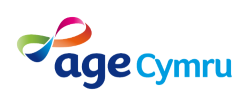What is adult safeguarding?
Safeguarding is a term that refers our duty to protect an adult’s right to live in safety, free from abuse and neglect. It is about people and organisations working together to prevent and stop both the risks and experience of abuse or neglect, while at the same time making sure that the adult’s wellbeing is promoted including, where appropriate, having regard to their views, wishes, feelings and beliefs in deciding on any action.
An Adult at Risk is a term that refers to any adult (aged 18 years or more) who:
(a) Is experiencing or is at risk of abuse or neglect;
(b) Has needs for care and support (whether or not the authority is meeting any of those needs); and
(c) As a result of those needs is unable to protect himself or herself against the abuse or neglect or the risk of it.”
Abuse
“abuse” means physical, sexual, psychological, emotional or financial abuse (and includes abuse taking place in any setting, whether in a private dwelling, an institution or any other place), and “financial abuse” includes:
- having money or other property stolen
- being defrauded
- being put under pressure in relation to money or other property
- having money or other property misused.
Neglect
“neglect” means a failure to meet a person’s basic physical, emotional, social or psychological needs, which is likely to result in an impairment of the person’s well-being (for example, an impairment of the person’s health).
Abuse may be an Act of Omission (failing to act) or neglect. Abuse may involve the vulnerable adult being persuaded or forced to enter into a financial or sexual arrangement to which they have not, or cannot, understand or consent.
An adult at risk may therefore be a person who, for example:
- is an older person who is frail due to ill health, physical disability or cognitive impairment
- has a learning disability
- has a physical disability and/or a sensory impairment
- has mental health needs including dementia or a personality disorder
- has a long-term illness/condition
- misuses substances or alcohol
- is an unpaid carer such as a family member/friend who provides personal assistance and care to adults and is subject to abuse
- lacks mental capacity to make particular decisions and is in need of care and support.
Safeguarding is everyone’s responsibility.
Coercive and controlling behaviour
Controlling or coercive behaviour does not relate to a single incident, it is a purposeful pattern of behaviour which takes place over time in order for one individual to exert power, control or coercion over another. This new offence focuses responsibility and accountability on the perpetrator who has chosen to carry out these behaviours.
The cross-Government definition of domestic violence and abuse outlines controlling, or coercive behaviour as follows:
Controlling behaviour is a range of acts designed to make a person subordinate and/or dependent by isolating them from sources of support, exploiting their resources and capacities for personal gain, depriving them of the means needed for independence, resistance and escape and regulating their everyday behaviour.Coercive behaviour is a continuing act or a pattern of acts of assault, threats, humiliation and intimidation or other abuse that is used to harm, punish, or frighten their victim.
Controlling or coercive behaviour should be dealt with as part of adult and / or child safeguarding and public protection procedures.
The types of behaviour associated with coercion or control may or may not constitute a criminal offence in their own right. It is important to remember that the presence of controlling or coercive behaviour does not mean that no other offence has been committed or cannot be charged. However, the perpetrator may limit space for action and exhibit a story of ownership and entitlement over the victim. Such behaviours might include:
- isolating a person from their friends and family
- depriving them of their basic needs
- monitoring their time
- monitoring a person via online communication tools or using spyware
- taking control over aspects of their everyday life, such as where they can go, who they can see, what to wear and when they can sleep
- depriving them of access to support services, such as specialist support or medical services
- repeatedly putting them down such as telling them they are worthless
- enforcing rules and activity which humiliate, degrade, or dehumanise the victim
- forcing the victim to take part in criminal activity such as shoplifting, neglect or abuse of children to encourage self-blame and prevent disclosure to authorities
- financial abuse including control of finances, such as only allowing a person a punitive allowance
- threats to hurt or kill
- threats to a child
- threats to reveal or publish private information (e.g. threatening to ‘out’ someone)
- assault
- criminal damage (such as destruction of household goods)
- rape
- preventing a person from having access to transport or from working.
